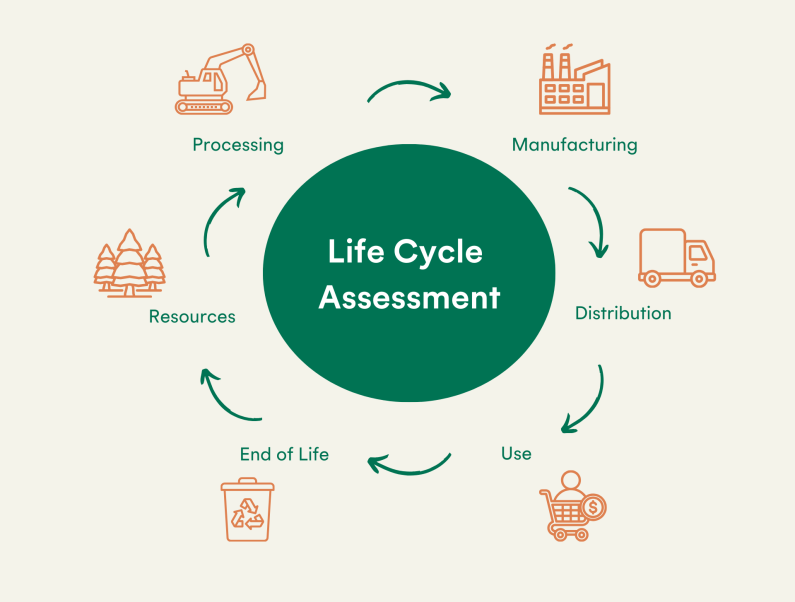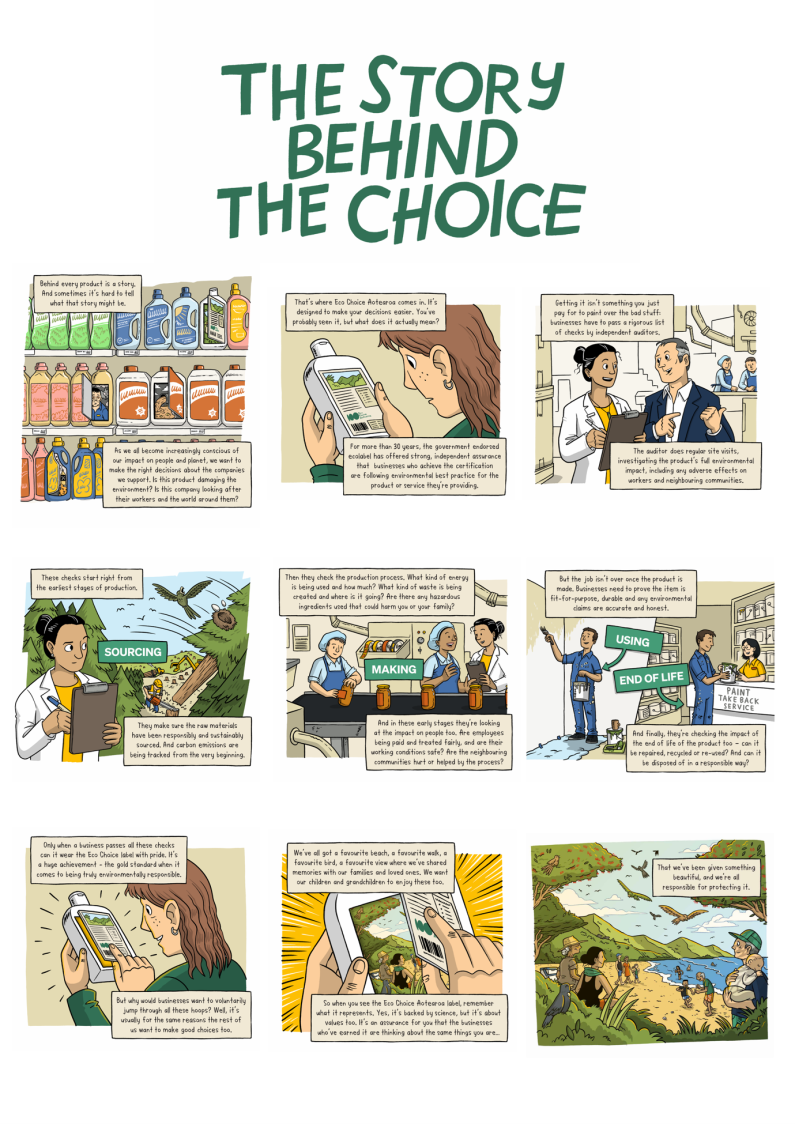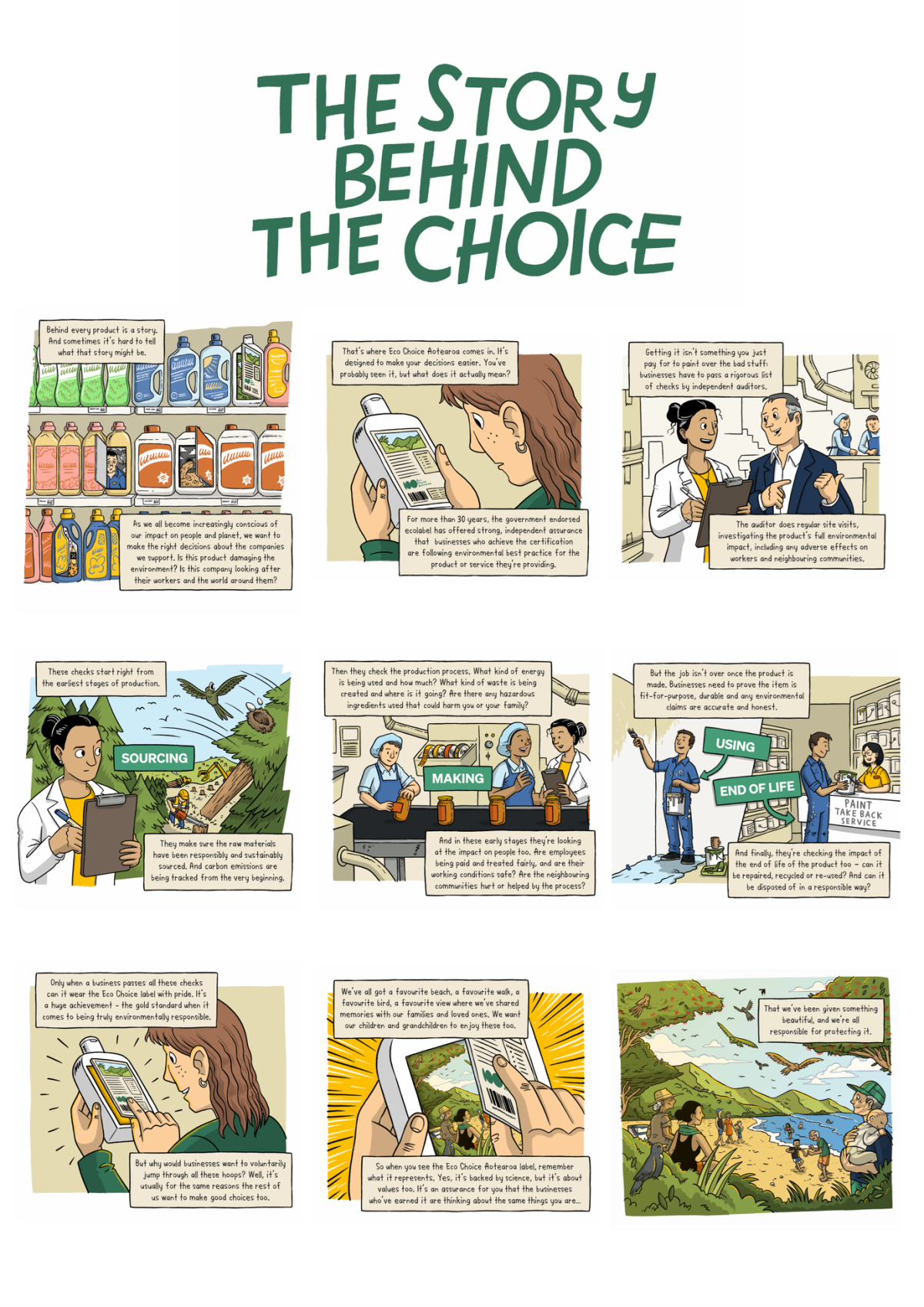About Eco Choice Aotearoa
This page provides information of Eco Choice Aotearoa, the country's official environmental certification, trademarked by the NZ Government.
This page provides information of Eco Choice Aotearoa, the country's official environmental certification, trademarked by the NZ Government.
Eco Choice Aotearoa is the New Zealand Government’s official ecolabel. The ecolabel independently certifies products and services that meet high environmental standards, helping New Zealanders make better choices.
Eco Choice Aotearoa was established more than 30 years ago to provide a credible, third-party mechanism for recognising environmentally preferable products and services.
Beyond environmental impacts, the ecolabel also includes criteria around human health, social accountability, and fitness-for-purpose.
Guided by ISO 14024 principles, the ecolabel sets rigorous, internationally aligned standards tailored to New Zealand, requiring products to meet strict criteria and commit to continuous improvement.
Companies who can meet or exceed these rigorous specifications are permitted to display the ecolabel which is widely recognised as a badge of sustainable leadership.
Currently, the ecolabel certifies products and services with a combined annual revenue of more than NZD$2 billion. These range from everyday items like cleaning products, paper products and paints, through to furniture, textiles, constructions materials and more.
Hear directly from New Zealand businesses on why they are proud to choose Eco Choice Aotearoa.
As a founding member of the Global Ecolabelling Network (GEN), Eco Choice Aotearoa collaborates with similarly rigorous ecolabels across 60 countries to harmonise its standards.
In December 2025, Eco Choice Aotearoa, the country’s official ecolabel, has signed a Memorandum of Understanding (MoU) with China’s national ecolabelling body, China Environmental United Certification Centre (CEC), to promote ecolabelling and encourage sustainable trade.
Read more about the MOU with China (Eco Choice Aotearoa)
Eco Choice Aotearoa takes a life-cycle approach, looking at everything from responsible sourcing, sustainable production and end-of-use.
In addition, the ecolabel considers:
The certification process helps businesses identify environmental and social hotspots in their supply chains, providing insights that can inform the redesign or improvement of products and services.
Eco Choice Aotearoa currently produces standards for over 20 categories such as paints, textiles, building and construction materials, cleaning products and more. However, the ecolabel has the capacity to develop new standards where there is a clear need for market differentiation.


A multi-panel illustrated comic titled “The Story Behind the Choice.” The comic explains how Eco Choice Aotearoa certification works by following a character learning what the ecolabel means.
Panel 1: A person looking at a supermarket shelf full of brightly coloured cleaning products. Text explains that every product has a story, and it’s hard to know what that story is, what impact it has on people and the planet.
Panel 2: Close-up of the person reading a label on a bottle. Text says Eco Choice Aotearoa helps people make better decisions, but many don’t know what it actually means.
Panel 3: A laboratory setting, where a woman in a lab coat and a male auditor are talking. Text says Eco Choice Aotearoa is government-endorsed, has existed for more than 30 years, and involves independent assurance. Businesses can’t pay to opt in - they must pass strict audits including site visits and checks on environmental impact and worker conditions.
Panel 4: A scientist in nature holds a clipboard near a plantation. A label reads “Sourcing.” Text explains that Eco Choice audits start from sourcing to ensure raw materials are responsibly and sustainably obtained, with attention to environmental and social impacts from the very beginning.
Panel 5: A factory scene with workers handling cleaning products. A label reads “Making.” The text says auditors review energy use, hazardous ingredients, and worker wellbeing during production, checking whether the process harms communities or the environment.
Panel 6: A split panel – one is someone painting a wall with a label that reads “Using”. The other side shows the painter at a hardware store with a label that reads “End of Life.” The text explains that businesses also have to prove whether their products perform well, and whether their products can be reused, recycled, or safely disposed of.
Panel 7: The original shopper looks at the certified product again. Text explains that businesses must pass all checkpoints to earn the Eco Choice label. A significant achievement that signals real responsibility.
Panel 8: The back of the product opens up to reveal a coastal scene. Text says we all have a favourite beach, walk or view that we want to protect and share with our loved ones. When shoppers choose products with the Eco Choice logo, they are choosing a better future and supporting businesses that match their values.
Panel 9: A coastal scene with people enjoying the beach. Text explains that we’ve all been giving something beautiful, and it is our responsibility to protect it.

A multi-panel illustrated comic titled “The Story Behind the Choice.” The comic explains how Eco Choice Aotearoa certification works by following a character learning what the ecolabel means.
Panel 1: A person looking at a supermarket shelf full of brightly coloured cleaning products. Text explains that every product has a story, and it’s hard to know what that story is, what impact it has on people and the planet.
Panel 2: Close-up of the person reading a label on a bottle. Text says Eco Choice Aotearoa helps people make better decisions, but many don’t know what it actually means.
Panel 3: A laboratory setting, where a woman in a lab coat and a male auditor are talking. Text says Eco Choice Aotearoa is government-endorsed, has existed for more than 30 years, and involves independent assurance. Businesses can’t pay to opt in - they must pass strict audits including site visits and checks on environmental impact and worker conditions.
Panel 4: A scientist in nature holds a clipboard near a plantation. A label reads “Sourcing.” Text explains that Eco Choice audits start from sourcing to ensure raw materials are responsibly and sustainably obtained, with attention to environmental and social impacts from the very beginning.
Panel 5: A factory scene with workers handling cleaning products. A label reads “Making.” The text says auditors review energy use, hazardous ingredients, and worker wellbeing during production, checking whether the process harms communities or the environment.
Panel 6: A split panel – one is someone painting a wall with a label that reads “Using”. The other side shows the painter at a hardware store with a label that reads “End of Life.” The text explains that businesses also have to prove whether their products perform well, and whether their products can be reused, recycled, or safely disposed of.
Panel 7: The original shopper looks at the certified product again. Text explains that businesses must pass all checkpoints to earn the Eco Choice label. A significant achievement that signals real responsibility.
Panel 8: The back of the product opens up to reveal a coastal scene. Text says we all have a favourite beach, walk or view that we want to protect and share with our loved ones. When shoppers choose products with the Eco Choice logo, they are choosing a better future and supporting businesses that match their values.
Panel 9: A coastal scene with people enjoying the beach. Text explains that we’ve all been giving something beautiful, and it is our responsibility to protect it.
Greenwashing is rampant in the marketplace, making it difficult to know which products and services to trust. Here’s how you can tell the difference and make choices with confidence.